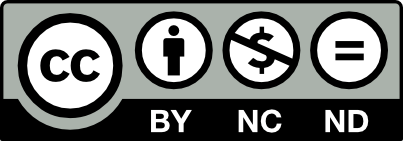This page is licensed under Creative Commons under Attribution 4.0 International. Anyone can share content from this page, with attribution and link to College MatchPoint requested.
How AI Is Opening New Doors for Neurodiverse Students
An estimated 15 to 20 percent of high school and college students are neurodivergent, including many with ADHD, autism, or dyslexia. These students bring creativity, focus, and unique problem-solving skills to the classroom, especially in STEM fields. Yet too often, traditional classrooms have not been designed with their needs in mind.
AI is beginning to change that. Surveys show that more than 70 percent of neurodivergent college students say AI-powered reading tools significantly improve comprehension and persistence. Studies indicate course completion rates improve by up to 40 percent when adaptive AI platforms are in use. One in three neurodivergent students reports that AI provides greater independence, stronger planning, and higher motivation to complete assignments.

The early evidence is encouraging. AI is not replacing teachers or the relationships students need, but it is giving neurodiverse learners new ways to succeed. Here are five areas where AI is opening doors, along with practical tips for families to make the most of these tools.
Personalized Learning That Fits the Student
Adaptive learning platforms such as Khan Academy, DreamBox, and Brainly adjust complexity, pacing, and modality to meet individual needs. For students with ADHD or dyslexia, this means less sensory overload and more opportunities to master material step by step.
Example: A student who becomes overwhelmed by long math assignments can use an adaptive platform that breaks problems into shorter sets, celebrates progress, and provides instant feedback. The result is stronger confidence and improved task completion.
Pro Tip: Choose platforms that allow you to set session length. Shorter and more frequent practice sessions are often more effective than one long block of study time.
Communication Becomes More Accessible
AI-powered speech-to-text tools, immersive readers, and chat features improve both access and expression. These supports are especially valuable for students with reading differences or expressive language challenges.
Example: A high schooler with dyslexia can use an immersive reader to listen to a complex text while responding through speech-to-text. Assignments that once took hours become more approachable and engaging.
Pro Tip: Encourage your student to practice with these tools regularly, not just before a test. Familiarity helps them use the supports smoothly in academic settings.
Strengthening Executive Functioning
Organization and self-regulation are challenging for many students, especially those who are neurodivergent. AI-powered calendars, task managers, and smart reminders can help break large projects into smaller steps and keep students on track.
Example: A college student with ADHD can use an AI-driven planner that divides a research paper into daily goals with reminders. The technology reduces stress and builds momentum without constant external prompting.
Pro Tip: Pair reminders with small rewards. Even something simple like checking off a task or taking a short break reinforces productive study habits.
Customizing the Learning Environment
AI tools now support sensory needs through background noise control, captioning, and adjustable interfaces. These features create learning spaces that reduce distractions and improve focus.
Example: A student with sensory sensitivities can combine captioning with noise-filtering software during a virtual class. The session becomes more accessible and less overwhelming.
Pro Tip: Experiment with different combinations of settings. Adjusting text size, color contrast, or audio levels can make a significant difference in focus and comprehension.
Social and Emotional Support
AI companions and virtual assistants are beginning to provide gentle coaching, encouragement, and practice in social communication. These tools offer a safe space for students to build confidence before applying skills in real interactions.
Example: A middle schooler practicing conversation skills can rehearse with an AI chatbot that gives encouraging feedback, making it easier to transfer those skills to peer conversations.
Pro Tip: Use these tools for practice, then encourage real-world role play with family members, mentors, or peers to strengthen the skills beyond the screen.
Bottom Line
AI is creating more equitable and engaging educational experiences for neurodiverse students. By personalizing instruction, improving communication, supporting executive functioning, adapting environments, and offering social coaching, AI is helping students move from frustration to confidence.
For parents of neurodiverse students, the takeaway is clear. AI is not just another gadget. It is an emerging set of supports that can help your student thrive in school and beyond, on their own terms.


